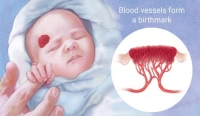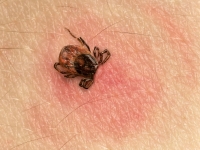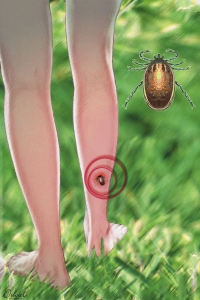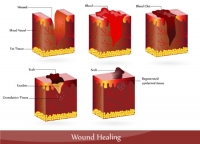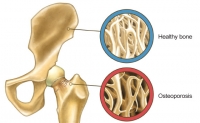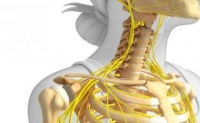01 / 24 / 2019
PRESS RELEASE A team of researchers from the Dr. Rath Research Institute in California has developed a cancer vaccine that is effective in reducing tumor growth. A peptide-based vaccine, it targets specific enzymes known as metalloproteinases (MMPs) that are necessary for any cancer to grow tumors, metastasize, and form blood vessels in tumors (angiogenesis). The Dr. Rath research team showed that test animals, vaccinated with peptides containing specific sequences from MMP-2 and MMP-9 and subsequently challenged with melanoma cancer cells, had an average reduction in tumor volume of about 76% compared to unvaccinated controls. Notably, some vaccinated animals did not develop any cancer at all.
01 / 22 / 2019
In our last Health Science News Page, we focused on various types of air pollutants and how they affect health worldwide. In this issue, we discuss how micronutrients can help to alleviate the many harmful effects of air pollution. Research and clinical data show that a healthy diet can provide some preventative benefit. Multiple clinical trials are investigating the benefits of micronutrients in averting the harmful effects of air pollution, and the major micronutrients that may help are the B group of vitamins, vitamins C and E, phytobiologicals, and omega-3 fatty acids.
11 / 06 / 2018
Air pollution is one of the most serious environmental problems in today’s world. Except for occasional natural events such as volcanic eruptions and wildfires, human activities are the sole contributor for the disastrous levels of particulate matter that is present in the air. Air pollution is the presence of excessive biological or chemical compounds in the air due to many things such as transportation, industrialization, agriculture, dust, household energy consumption, waste production and so on. Ozone emission is a major part of air pollution in cities and creates smog. In general, a modern life style and urbanization has resulted in more than 91% of the world’s population living in places where the air quality is detrimental to health.
09 / 27 / 2018
In August 2018, a jury in California awarded $289 million to a cancer patient whose cancer was caused by the Monsanto weed killer Roundup. Monsanto (an agro-giant, now part of the pharmaceutical company Bayer) has spent years claiming that their glyphosate-based herbicides are safe for humans. This court case also revealed that Monsanto knew and concealed the carcinogenic effects of this herbicide. For decades, researchers have warned about the cancer causing potential of glyphosate, however, there was no consensus until now. In 2015, the International Agency of Research on Cancer (IARC), a branch of the World Health Organization (WHO), concluded that glyphosate has a substantial potential to cause non-Hodgkin’s Lymphoma in humans. Yet, the US Environmental Protection Agency (EPA) presently allows 50 times more glyphosate on corn crops than they did in 1996.
09 / 11 / 2018
In a recent clinical trial involving 183 pregnant women in the Netherlands, the drug sildenafil (also sold under the trade name-Viagra) was tested to increase blood flow to the placenta and improve growth of unborn babies. This was supposed to be a groundbreaking trial to help the babies who were not growing properly in the womb. The theory behind this clinical trial was that Viagra would help dilate the placental blood vessels, increase the size of the placenta, and thus increase the blood supply to the fetus and its development.
08 / 08 / 2018
Hemangiomas are the most common birth defect involving malformations of blood vessels leading to benign tumors in infants and children. Approximately 4-10% of infants are born with at least one hemangioma. A recent increase in the incidence of hemangiomas in the United States is found to be linked with the increase in the frequency of low birth weight infants. More frequently seen in Caucasians than African Americans or Asians, the hemangiomas are five times more common in females than males.
06 / 19 / 2018
With the approaching summer season, we discussed some aspects of vector borne diseases mainly, Lyme disease in the last section of the Health Science News Page. Lyme disease (LD) was first widely recognized in 1975 by Old Lyme in Connecticut, USA, and today it results in approximately 30,000 cases per year in the USA and 65-80,000 cases in Europe. However due to misdiagnoses and underreporting, it is thought that the actual number of Lyme disease cases could be close to 300,000. And recently the Centers for Disease Control and Prevention (CDC) reported that the insect borne diseases have tripled in the last decade.
05 / 22 / 2018
According to a recent report published by the Centers for Disease Control and Prevention (CDC), insect-borne diseases in the US have tripled over a period from 2004 through 2016. Ticks, mosquitoes, and fleas are the most common carriers of diseases. These types of biting insects are referred to as vectors. Since 2004, nine additional insect-borne diseases were discovered in the USA. With worldwide weather patterns changing, the longer hotter summer seasons are thought to be one of the leading causes of the increase in vector-borne diseases. Warm weather influences the breeding habits as well as the expansion of the territories of mosquitoes, ticks, and fleas. Additionally, increased intercontinental travel and reforestation of suburban areas expose more people to insects and wildlife carrying these vectors.
04 / 24 / 2018
Healthy skin is the first barrier to prevent any wounds and it is the crucial component in would repair. The skin is the largest organ in the body and it is a mirror of the health of the body’s internal organs. In addition to protection of inner tissue structures, the skin helps in regulation of body temperature and elimination of metabolic waste products. It is estimated that 6.5 million people in the US struggle with slow wound healing because of various reasons which include diabetes, obesity, and long-term disability such as stroke, spinal cord injury, and multiple sclerosis.
04 / 03 / 2018
Everybody has experienced wounds either after an injury or surgery and most of the wounds heal naturally in an otherwise healthy person. A wound that does not heal or does not show signs of healing after two weeks is considered a slow-healing or a chronic wound and requires special care from a wound care facility to prevent infection and further complications and to accelerate the recovery process.
03 / 20 / 2018
Bone fractures are one of the most painful injuries and require a lengthy recovery time. Everyone is at an equal risk of breaking a bone either from a fall, sports activities, or a car accident. However, bone fractures are more common and take longer to heal in people suffering from osteoporosis. The most common bone fracture, especially in active adults and children, is a broken leg and often involves a tibial (or shinbone) fracture. In the US, approximately 492,000 tibial fractures are reported every year resulting in close to 400,000 hospital days. The usual time for healing a tibial fracture could be as long as 12 to 16 weeks. This is due to a high incidence of complications requiring strong painkillers for the patient.
03 / 06 / 2018
It is a popular perception that calcium and vitamin D are essential nutrients for healthy bones. However, few people are aware that bone health largely depends on its protein foundation – the collagen fibers. The alignment of collagen fibers within the bone (its “internal skeleton”) determine how calcium and other minerals are deposited, and therefore healthy collagen is the basis of the strength and stability of the entire bone.
02 / 20 / 2018
The skeletal system is made up of bones and joints and provides support, mobility, and protection to various organs in the body. We are born with more than 300 bones. Many of them, such as the skull bones, fuse together and as an adult we have 206 bones. The largest bone in the human body is the femur (thigh bone) and the smallest bones in the human body are the three bones of the middle ear. Maximum bone growth occurs during childhood and puberty, and tapers off as the person approaches 16-18 years of age. While the bones do not grow in size after 18-20 years, they do not remain just as stagnant, hard and inert structures. Continuous metabolic processes called bone remodeling, during which bone is resorbed and formed again occur throughout our life. A major role in this process is played by specialized cells in the skeletal system called osteoblasts which are bone lining cells, and osteoclasts which are bone dissolving cells. Our entire skeleton is renewed every few years and it is estimated that at any time about 20% of an adult bone is undergoing remodeling.
02 / 06 / 2018
We are exposed to a variety of infectious agents in the environment such as bacteria, viruses, and parasites. One of the recently published studies indicates that viruses can spread from one person to another through very fine air particles exchanged just by breathing.1 The tiny particles stay suspended in the air for a long time, even when the person may not be symptomatically ill. That means a sick person does not need to be coughing or sneezing to spread the virus. Any seasonal change challenges our immune system with new pathogens; therefore, our immune system needs to be functioning at its optimum to fight infectious agents.
01 / 16 / 2018
Influenza (flu) season in the northern hemisphere starts in late fall and peaks in winter. Flu is a common viral disease and affects up to 20% of the world’s population every year. This year the flu season has become more severe and serious. In most cases the flu is benign but it can also have serious consequences, especially in people with compromised immune systems, the elderly, and children. Worldwide, the flu is estimated to cause 250,000 to 500,000 deaths each year.
12 / 07 / 2017
Approximately half the population in western countries takes supplements on a daily basis. Women, children, a growing aging population, and increasing consumer awareness about general health heavily contributes to the popularity of supplements. The global supplement market is $82 billion and the US contributes $37 billion to that number. Faced with countless options and a worldwide market, choosing supplements can be overwhelming. Rarely are consumers supplied with sufficient scientific information upon which to base their decisions and they usually rely on a company’s marketing materials.





